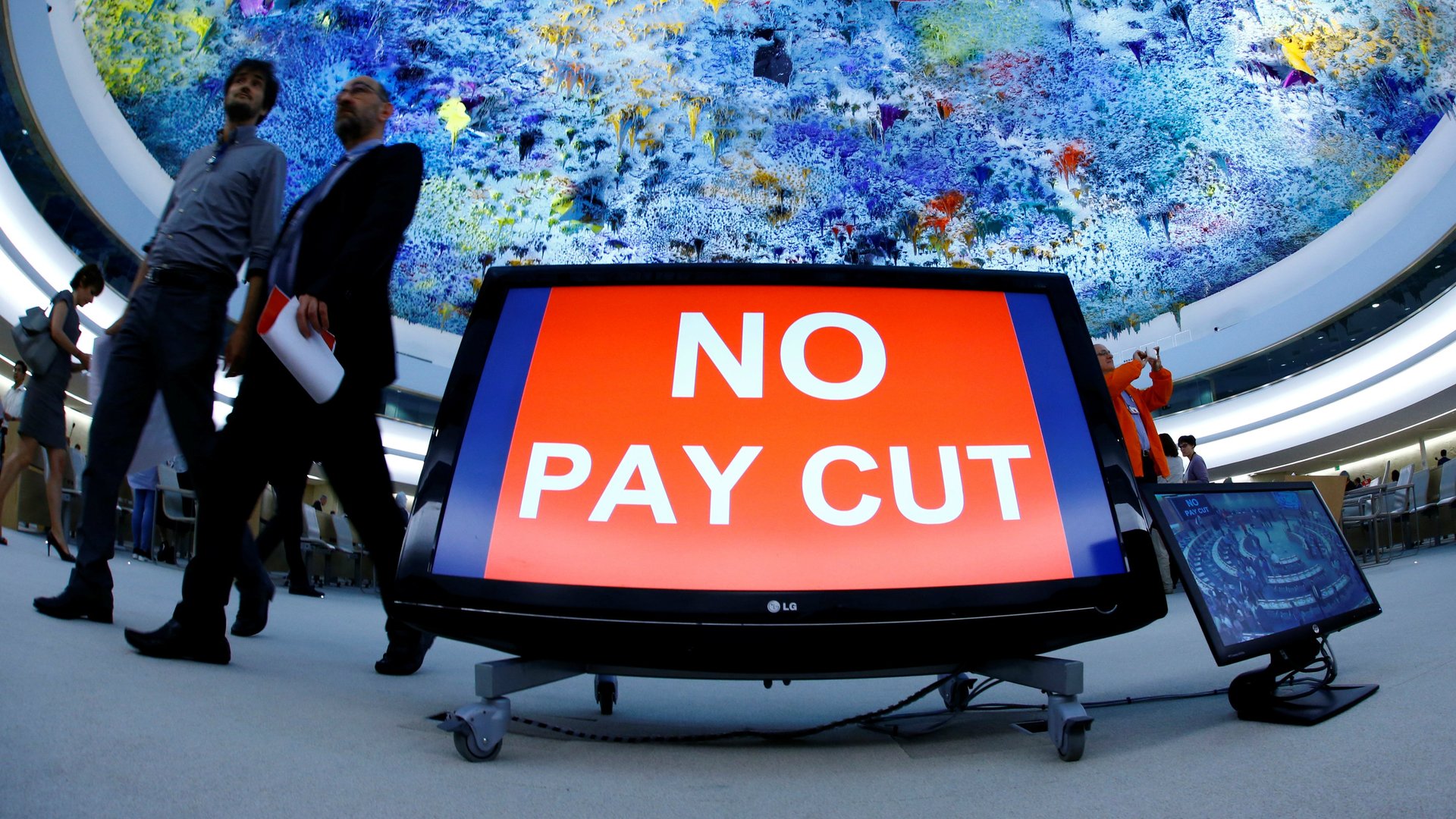Economists conclude that people are willing to put up with pay cuts, after all
In the 1930s, economist John Maynard Keynes was trying to figure out why unemployment was so high during recessions. Keynes decided one important reason was that people really hated pay cuts. If an employer told a worker that they would have to work for $1 an hour rather than $3, he thought they would just up and quit. In tough times, then, employers faced the choice of keeping employees on their current wages or firing them; keeping people in jobs, but at lower wages, was not a viable option, according to Keynes.


In the 1930s, economist John Maynard Keynes was trying to figure out why unemployment was so high during recessions. Keynes decided one important reason was that people really hated pay cuts. If an employer told a worker that they would have to work for $1 an hour rather than $3, he thought they would just up and quit. In tough times, then, employers faced the choice of keeping employees on their current wages or firing them; keeping people in jobs, but at lower wages, was not a viable option, according to Keynes.
Keynes’s explanation became received wisdom, and an essential part of many economic theories about the job market. Economists call the phenomenon “nominal wage rigidity.” It is now one of the primary defenses of government-targeted inflation (the US, UK, euro zone, and Japan all target a 2% inflation rate). The argument is that inflation allows salaries to naturally fall in value, allowing employers to reduce their wage burden without reducing the nominal amount they pay workers.
But was Keynes right? New evidence suggests not.
Economists Michael Elsby of the University of Edinburgh and Gary Solon of the University of Arizona recently released a paper challenging Keynes’ hypothesis. They examined research papers on nominal wage rigidity from the UK, US, Spain, Mexico, Germany, and a number of other countries. They all tell the same story: People are actually fairly likely to take wage cuts. Study after study show that, in periods of low inflation, 15-25% of people see their hourly wage go down from year to year. This suggests that resistance to wage cuts is probably not a particularly important factor causing high unemployment, or other economic phenomena.
It wasn’t until recently that the nominal wage rigidity hypothesis could be debunked, Elsby and Solon explain. In the past, in order to assess the share of people taking pay cuts, economists used survey data in which people are asked about their earnings history. This was considered untrustworthy. Today, economists are more likely to use tax data for researching wage changes, which is generally considered a more reliable reflection of actual results. Tax data from many countries clearly shows wage declines, for both hourly and salaried workers, leaving no doubt that wages are not as sticky as previously thought.
The finding is important for economists thinking of remedies for high unemployment. The idea that high inflation can “grease the wheels of the labor market,” as the prominent economist James Tobin once said, is probably wrong. Other explanations are now needed.
The findings are also notable because they challenge the conventional wisdom. Due to improved technology and government transparency, researchers now have access to huge new datasets to test long-held but unproven ideas. Upon closer examination, many others will undoubtedly crumble.